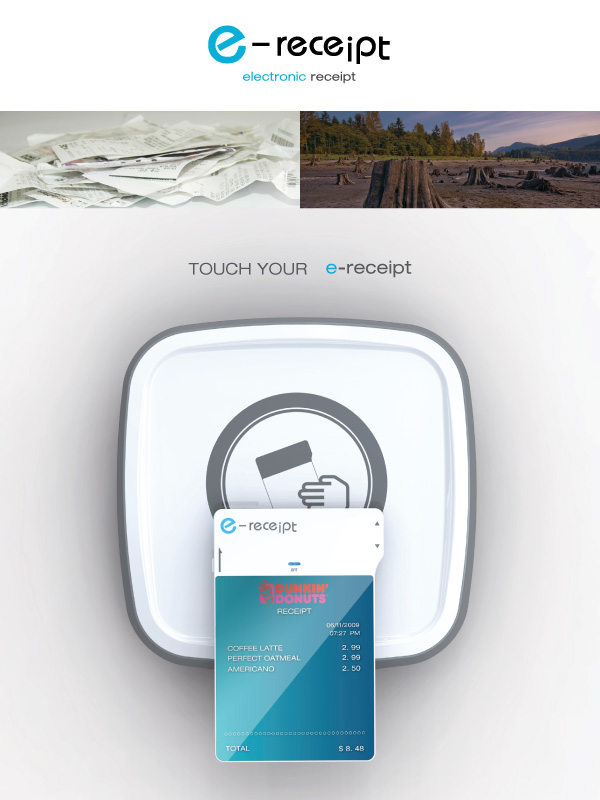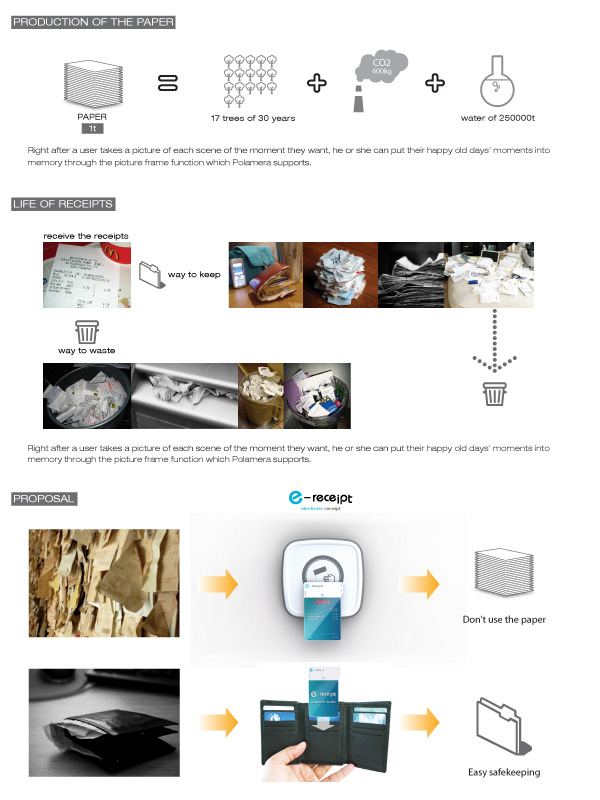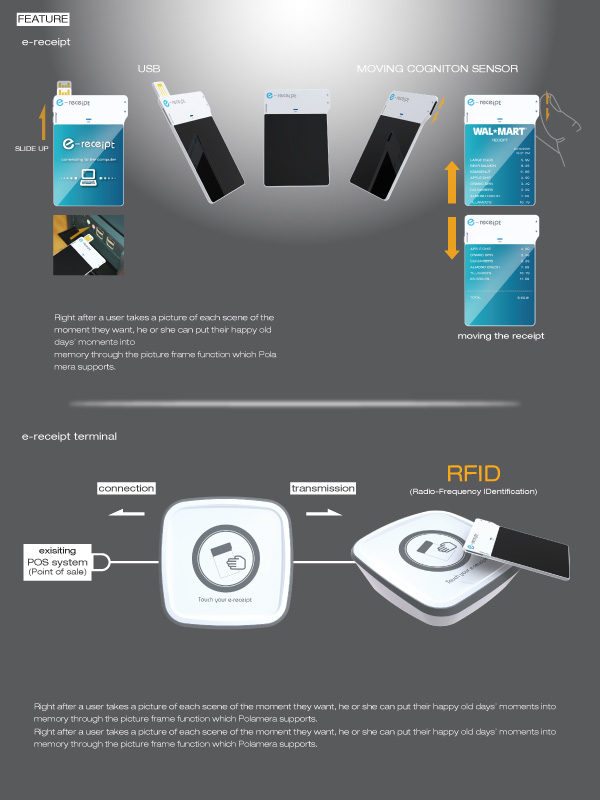
e receipt by lee sang hoon stolee from korea
designer's own words:
E-receipt project based on such a background replaces paper receipts through use of RFID and provides convenience of keeping and managing receipts to users.
Seventeen 30-years-old trees, 25 tons of water, and subsequently emitted 600kg of carbon dioxide: These numbers are what we need to produce one ton of paper we normally use.
As 350 million tons of paper is produced (in 2004) annually, multiplication by this number can inform us how much trees are cut down, and how much carbon dioxide is emitted annually.
Although it is true that the rate of recycling paper is increasing through environment campaigns, this does not apply to paper with small volumes.
One representative example is a receipt issued after a business transaction. A receipt is either stored or discarded depending on importance of its payment information, and the temporarily stored receipt will also be discarded after all without recycling when its use is over.
The amount of paper of the thrown away receipts is enormous, which means so much amount of paper is not being recycled and then so many trees have to be cut down.
If there is an alternative replacing the paper receipt issued after a payment, production of paper and carbon dioxide can be substantially reduced.
touch you e-receipt
 production of the paper
production of the paper
 interface of e-receipt
interface of e-receipt